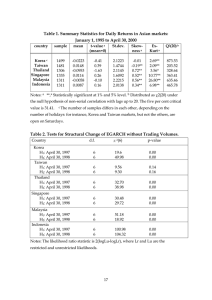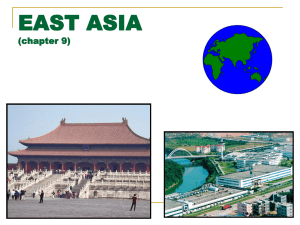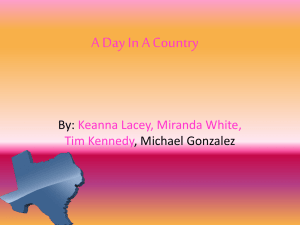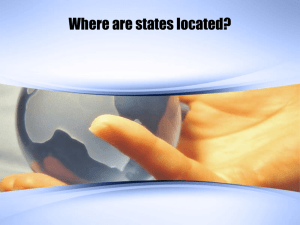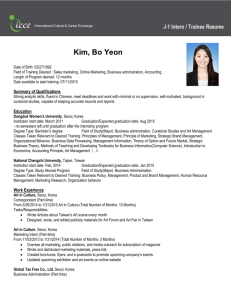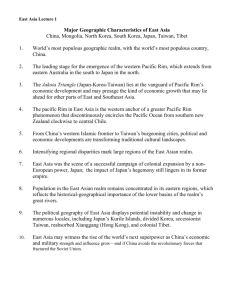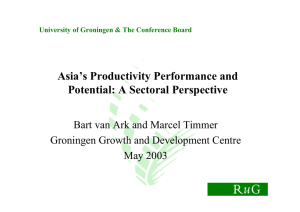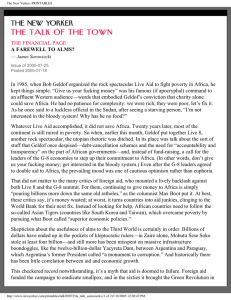File - Mrs. Moore KHS
advertisement
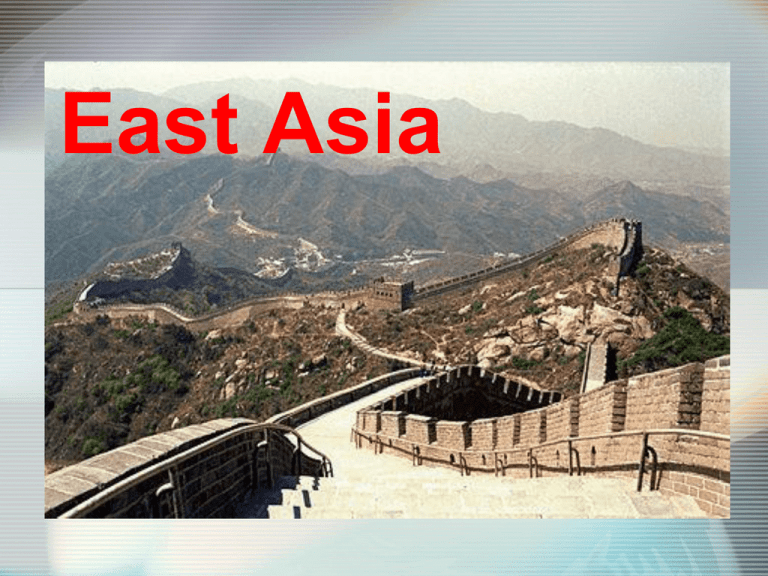
East Asia • http://www.youtube.com/watch?v=Js DY1Ha83M8 Chinese culture: Watch the video and tell me 1.What do you think China was trying to tell the world? 2.What has china contributed to the world? 3.What did you learn from the video? Relative Location- How do the physical features in East Asia protect it from outside influences? Introduction –East Asia is the most populous region in the world –China is the most populous country, and the oldest continuous national culture –Eastern China is undergoing rapid economic development –Japan is extremely wealthy, but poverty may be found in parts of the region Growing competition JAKOTA TRIANGLE – JApan south KOrea & TAiwan THE JAKOTA TRIANGLE •CHARACTERISTICS –Great cities –Enormous consumption of raw materials –State-of-the-art industries –Exports –Rapid development Environmental Geography: Resource Pressures in a Crowded Land • Flooding, Dam-Building, and Related Issues – The Three Gorges Controversy • Yangtze (Chang Jiang) River (largest hydroelectric dam in the world) – Purpose: control floods & generate electricity – Problems: jeopardizes animal species, flood a major scenic attraction, and over 2 million people – Erosion on the Loess Plateau • Huang He’s sediment burden from the Loess Plateau • Loess – a fine, wind-blown deposited material (yellow) Three Gorges Dam Under Construction Yellow River China’s Grand Canal: North-South Transportation System •Centuriesold engineering feat that is being upgraded for greater use in the coastal growth zone now. In China Agriculture Remains Important: Rice in south & wheat in North Population Map of East Asia (Fig. 11.14) One Child policy • Attempt at population control • Caused birth rates to go down but also caused unequal birth ratio http://www.youtube.com/watch?v=ndWuq6AznmQ Population and Settlement: A Realm of Crowded Lowland Basins • Japan – Settlement Patterns • 3 largest metropolitan areas: Tokyo, Osaka, and Nagoya • Population density: 870 per square miles • Population density is high in Taiwan, Hong Kong and parts of East China as well http://www.youtube.com/watch?v=E FItMX0 • KOREA: NORTH-SOUTH CONTRASTS NORTH KOREA – 55% of the land, 1/3 of the population, extremely rural – Inefficient, non-productive agriculture • SOUTH KOREA – 45% of the land, 2/3s of the population, highly urbanized – Modern factories – Intensive, increasingly mechanized agriculture North South THE KOREAS • POPULATION 23,700,000 50,200,000 • GNP (BILLIONS) $ 21.3 $ 508.3 • GNP/CAPITA $ 920 $ 8,600 • AGRICULTURE RESTRICTIVE GOOD – (as % of GNP) 25 % 8% – (% work force) 36 % 21 % TAIWAN TAIWAN • Historical background: – 1949 – Chinese Nationalists (supported by the US) fled from the mainland and established the Republic of China (ROC) • Territory - approximately 14,000 Square miles • Population – 23.7 million • 77% urbanized
